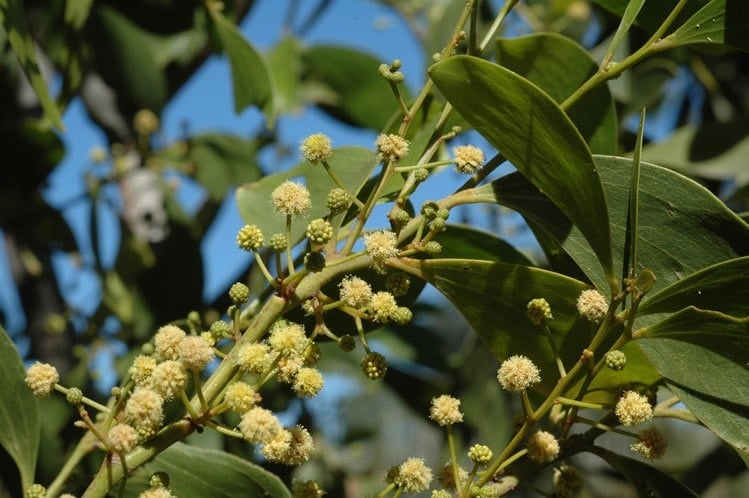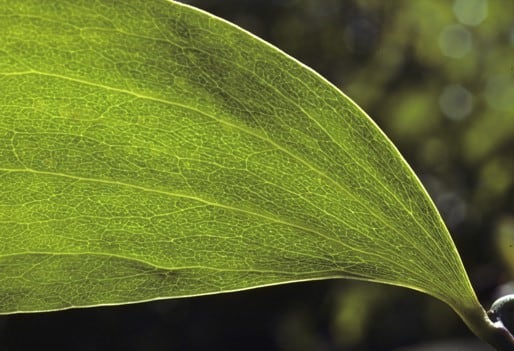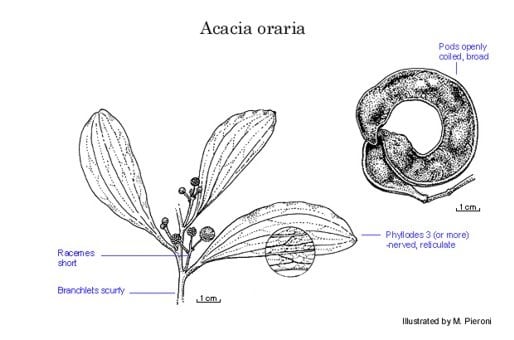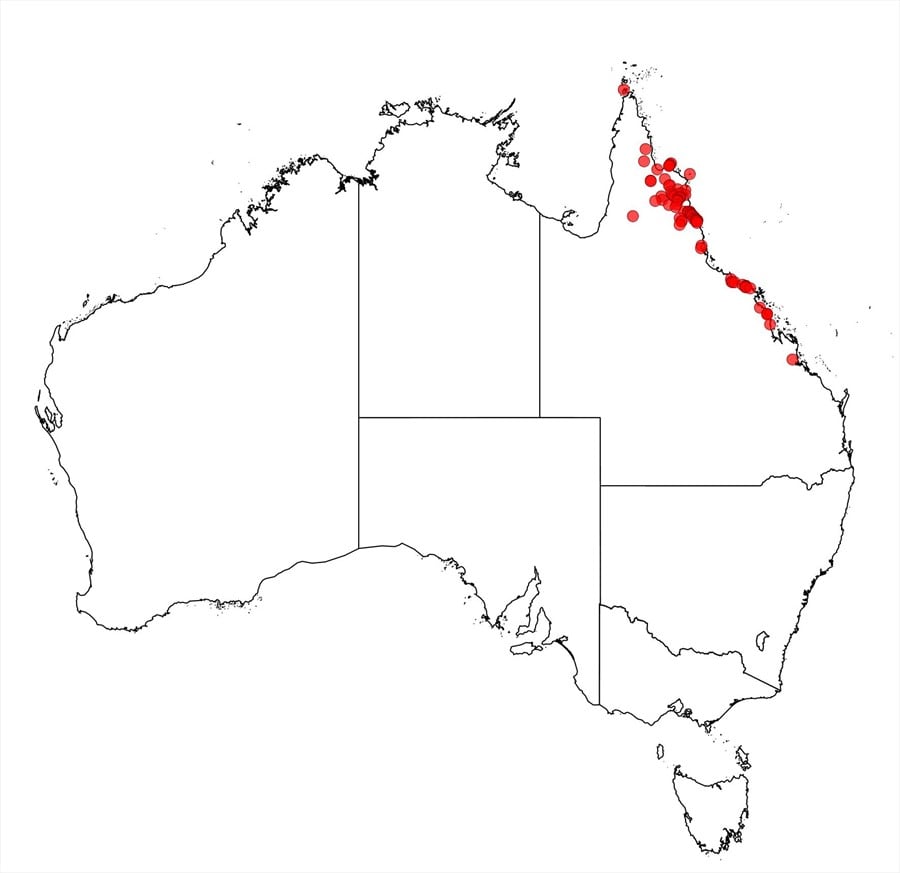Acacia oraria F.Muell.
WATTLE
Acacias of Australia
Family
Fabaceae
Distribution
Occurs in several disjunct areas along the eastern coast of Qld N of 22°S latitude, extending inland N of the Atherton Tableland. Also recorded from Flores and Timor, fide L.Pedley, Contrib. Queensland Herb. 18: 6 (1975).
Description
Spreading tree 3–10 m high. Bark fibrous, fissured. Branchlets white scurfy. Phyllodes inequilaterally obovate-oblanceolate to narrowly elliptic, 4.5–8 cm long and or rarely a few to c. 10 cm, 1.5–3.5 (–4.5) cm wide, rounded-obtuse, glabrous, scurfy when young, with 3 or more distant main longitudinal nerves (the lowermost sometimes confluent with the lower margin at the base), prominently reticulate between main nerves; gland basal. Inflorescences axillary or sometimes terminal 3–5-branched racemes; raceme axes 8–18 mm long, scurfy; peduncles 4–11 mm long, scurfy; heads globular, scurfy in bud, ±5 mm diam., 30–45-flowered, cream to pale yellow. Flowers 5-merous; sepals 1/4–1/2-united. Pods openly coiled to twisted, to 12 cm long, 1–1.5 cm wide, scurfy, margins prominent. Seeds longitudinal, ±4 mm long; areole closed; aril/funicle (3/4–) wholly encircling seed, red or orange.
Habitat
Grows in sand along beaches and inland along streams.
Specimens
Qld: Trinity Beach, Cairns, J.R.Maconochie 1713 (BRI n.v., DNA n.v., PERTH); between Cooktown and Lakeland, c. 21 km from Lakeland, J.Moriarty 231 (FRI n.v., PERTH).
Notes
In coastal areas of Qld the aril is red whereas further inland it is greenish orange.
Related to A. webbii and seemingly also to A. melanoxylon.
FOA Reference
Data derived from Flora of Australia Volumes 11A (2001), 11B (2001) and 12 (1998), products of ABRS, ©Commonwealth of Australia
Author
Minor edits by B.R.Maslin, J.Reid & J.Rogers
R.S.Cowan, B.R.Maslin
This identification key and fact sheets are available as a mobile application:
URL: https://apps.lucidcentral.org/wattle/
© Copyright 2018. All rights reserved.












